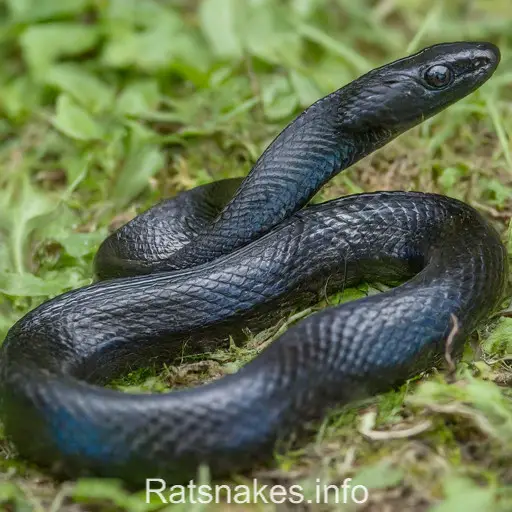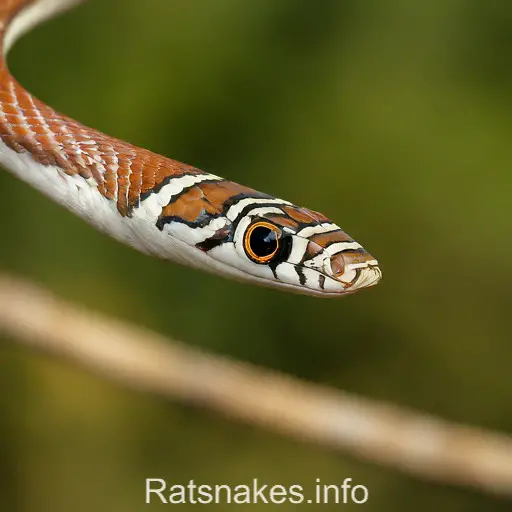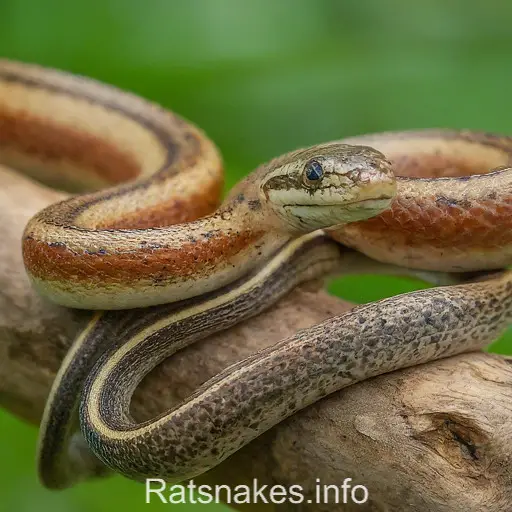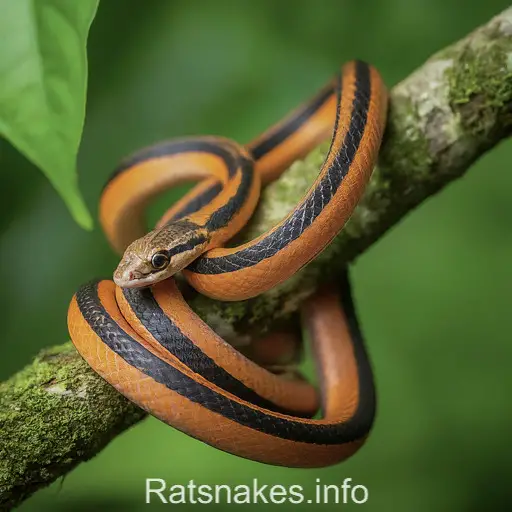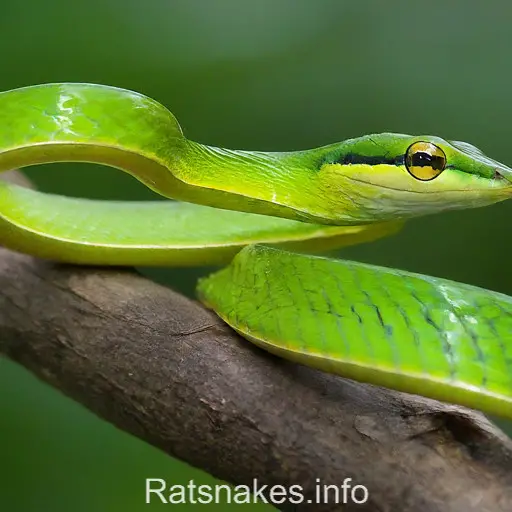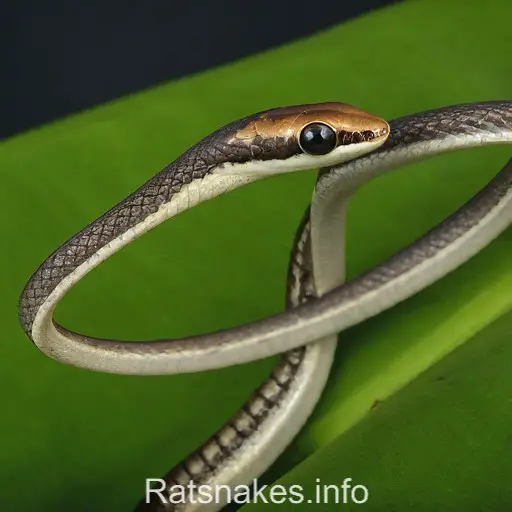
Are you curious about Ptyas carinata? We’ve got you covered! This fascinating species, commonly known as the Keeled Rat Snake, is a sight to behold in the world of reptiles. With its distinctive keeled scales and slender body, Ptyas carinata is a true marvel of nature.
As enthusiasts of wildlife, we are always eager to delve into the unique characteristics of different species. Ptyas carinata is no exception. From its preferred habitats to its feeding habits, there is so much to discover about this intriguing snake. Join us as we explore the wonders of Ptyas carinata and uncover the secrets that make it a remarkable creature in the animal kingdom.
Origins of Ptyas carinata
When it comes to the origins of Ptyas carinata, we find this fascinating species primarily in the South and Southeast Asia regions. Known for its distinctive characteristics, this snake species has adapted to various environments in countries such as India, China, Bangladesh, Thailand, and Vietnam.
Ptyas carinata has displayed a remarkable ability to thrive in a range of habitats, from grasslands to forests to agricultural areas. Its adaptability to different ecosystems has contributed to its widespread presence across the Asian continent.
The Keeled Rat Snake is often observed in rural areas near human settlements, preying on small mammals, birds, and other reptiles. This behavior indicates a level of adaptability and opportunism in seeking out food sources. Despite being a common sight in certain regions, the Ptyas carinata remains a fascinating subject for researchers and enthusiasts alike.
Physical Characteristics of Keeled Rat Snake
When it comes to the Ptyas carinata, there are some distinct physical characteristics that set this species apart. Here are some key features to help identify the Keeled Rat Snake:
- Keeled scales along its back, giving it a rough texture.
- Long and slender body, typically reaching lengths of 4 to 6 feet.
- Olive-brown or grayish coloration with darker patterns or bands running along its length.
- Prominent keels on its scales, especially noticeable on closer inspection.
- Large eyes and a slightly triangular head.
Understanding these physical traits can be crucial for correctly identifying the Keeled Rat Snake in its natural habitat.
Habitat Preferences of Ptyas carinata
When it comes to Ptyas carinata, understanding its habitat preferences is crucial for conservation efforts and wildlife management. Here are some key points about the habitat preferences of this species:
- Natural Habitats: Keeled Rat Snakes are commonly found in a variety of natural habitats, including grasslands, agricultural fields, marshes, and scrub forests.
- Temperature Range: These snakes thrive in warm climates, typically preferring temperatures ranging from 25°C to 35°C.
- Hiding Spots: Within their habitats, Ptyas carinata seek out places with ample hiding spots, such as rock crevices, burrows, and dense vegetation.
- Water Sources: Access to water sources is essential for these snakes, as they require hydration and often seek out areas near streams, ponds, or other bodies of water.
Understanding where Ptyas carinata thrives helps us protect their natural habitats and ensure their continued presence in the ecosystem.
Feeding Behavior of Keeled Rat Snake
When it comes to the feeding behavior of the Keeled Rat Snake, Ptyas carinata, we find that they primarily feed on rodents, birds, amphibians, and lizards. These snakes are skilled hunters that use their keen sense of smell and excellent vision to locate prey. They are known for their constricting method of subduing and swallowing their prey whole.
Keeled Rat Snakes are opportunistic feeders, often taking advantage of whatever prey is available in their habitat. Their ability to consume prey much larger than their own head size is impressive. These snakes play a crucial role in the ecosystem by helping to control rodent populations, which can have significant impacts on agricultural areas.
Their hunting behavior is largely nocturnal, with most feeding activities occurring during the night when their prey is most active. Understanding the feeding behavior of Ptyas carinata is vital for conservation efforts to ensure that their natural prey populations remain balanced and healthy.
In addition to their importance in controlling pest populations, the feeding behavior of Keeled Rat Snakes also reflects the rich biodiversity of the habitats they inhabit. By maintaining a healthy population of these snakes, we contribute to the overall ecological balance of their natural environment.
Conservation Status and Threats
When it comes to the conservation status of Ptyas carinata, or the Keeled Rat Snake, it is classified as Least Concern on the IUCN Red List. This classification suggests that their population is stable, which is good news for these important predators in the ecosystem. However, while they may not be facing immediate threats of extinction, there are still several factors that could impact their populations in the future.
One of the primary threats to the Keeled Rat Snake is habitat loss. Due to ongoing deforestation and urbanization, the natural habitats of these snakes are shrinking, reducing the available area for them to hunt, breed, and find shelter. This loss of habitat can lead to fragmentation of populations, making it harder for individuals to find mates and decreasing genetic diversity.
Another significant threat to Ptyas carinata is human persecution. Often misunderstood and feared, these snakes are sometimes killed by humans out of fear, misconceptions, or for their skin. Such actions can have a detrimental impact on local populations and disrupt the delicate balance of the ecosystem.
In addition to direct threats, indirect factors such as pollution, climate change, and disease can also affect the population of Keeled Rat Snakes. These factors can lead to food scarcity, reduced reproductive success, and increased susceptibility to illnesses, all of which can pose serious challenges to the long-term survival of these snakes in the wild.
Understanding and mitigating these threats is essential for ensuring the continued survival of Ptyas carinata and maintaining ecological balance in their habitats. By addressing these challenges through conservation efforts and habitat protection, we can work towards a future where these fascinating snakes thrive alongside other species in their ecosystems.
Key Takeaways
- Origins: Ptyas carinata, also known as the Keeled Rat Snake, primarily inhabits South and Southeast Asia regions, showcasing adaptability to various environments.
- Physical Characteristics: Identifying features of the Keeled Rat Snake include keeled scales, a long slender body, olive-brown coloration with darker patterns, prominent keels, large eyes, and a triangular head.
- Habitat Preferences: Found in grasslands, agricultural fields, and scrub forests, Ptyas carinata thrives in warm climates and seeks hiding spots with access to water sources.
- Feeding Behavior: These skilled hunters primarily prey on rodents, birds, amphibians, and lizards, displaying nocturnal feeding habits and essential roles in controlling pest populations.
- Conservation Status: Classified as Least Concern on the IUCN Red List, Ptyas carinata faces threats from habitat loss, human persecution, pollution, climate change, and diseases, highlighting the need for conservation efforts to ensure their survival.
Conclusion
It’s evident that Ptyas carinata, the Keeled Rat Snake, faces various threats to its survival in the wild. Despite being classified as Least Concern on the IUCN Red List, habitat loss, human persecution, and indirect factors like pollution and climate change pose significant challenges. Conservation efforts and habitat protection are crucial in ensuring the long-term survival and ecological balance of these important predators. By addressing these threats collectively, we can contribute to the preservation of the Keeled Rat Snake’s population, genetic diversity, and overall well-being in their natural habitats. Our commitment to conservation plays a vital role in safeguarding the future of Ptyas carinata and maintaining the delicate balance of our ecosystems.

